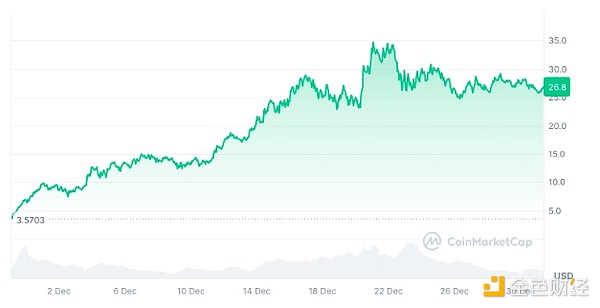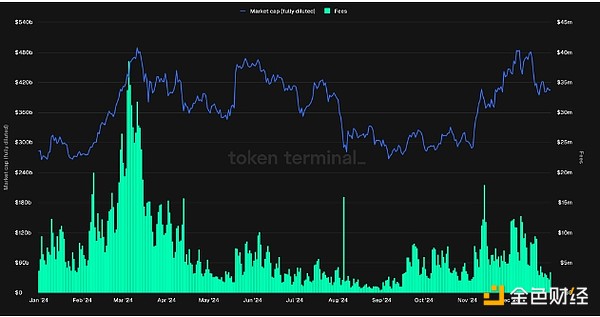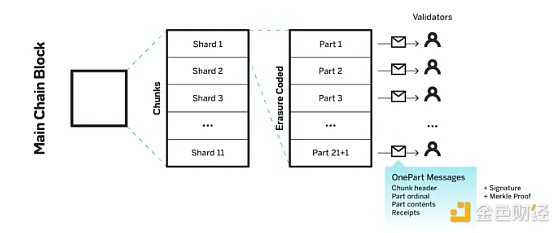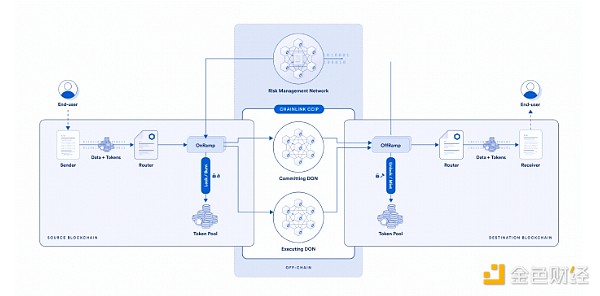Author: Vince Quill, CoinTelegraph; Compiled by Bai Shui, Jinse Finance
2024 is an important year for cryptocurrencies and blockchain networks. This year, the US launched Bitcoin and Ethereum exchange-traded funds (ETFs), Altcoins underwent major protocol upgrades, and new infrastructure networks were released.
Here are 10 crypto projects that implemented major protocol upgrades or launched their mainnet in 2024, in no particular order.
Avalanche9000/Etna Protocol Upgrade
The Avalanche9000 upgrade, also known as Etna, on the Avalanche network was hailed as the biggest upgrade in the protocol's history. It was launched on the Avalanche mainnet on December 16 after a testing phase on the Fuji testnet.
This update simplified the process of launching subnets (now called "Layer 1s") and changed the fee structure for subnet validators from a fixed 2,000 AVAX to one based on the number of nodes they are running.
According to the Avalanche Foundation, this upgrade reduced the cost of subnet deployment by 99.9% and decreased C-Chain network fees by 96%.
The update also shifted the responsibility of managing validators from the Avalanche P-Chain to the Layer 1s, giving them more autonomy and control over their networks.
Sui Implements Mysticeti Consensus Engine
The Sui protocol, a high-throughput blockchain, implemented the Mysticeti consensus engine in August.
According to a spokesperson from Sui's developer Mysten Labs, this update reduced the consensus latency to 390 milliseconds and minimized cross-validator communication to improve efficiency.
Sui's ability to process a large number of transactions per second (TPS) and its monolithic architecture helped it and other monolithic chains establish a foothold on the existing smart contract platform Ethereum in 2024.

Throughput and latency of Mysticeti. Source: Sui
Sonic Foundation Launches Sonic Mainnet
In May 2024, the Fantom Foundation (the organization behind the Fantom network) announced that the Sonic Foundation would oversee the deployment of its Sonic Chain.
Sonic Chain is an Ethereum Virtual Machine-compatible Layer-1 blockchain with sub-second finality, 10,000 TPS throughput, and the introduction of the Sonic Gateway (a bridge between Sonic and Ethereum).
The Sonic mainnet went live on December 18. Fantom token holders can switch to the new network by upgrading from FTM to the S token (the native asset of the Sonic network) on a one-to-one basis.
Hyperliquid Launches Token, Implements Staking
Hyperliquid, a Layer-1 blockchain optimized for decentralized finance, launched one of the largest cryptocurrency airdrops in history on November 29.
The project distributed 310 million HYPE tokens to community members, worth $1.2 billion at launch. The initial price of HYPE was $3.90, and it is currently trading around $26.8.
On December 30, the Hyper Foundation announced the launch of native staking on the Hyperliquid protocol, allowing users to lock up tokens in exchange for rewards to help secure the network.

HYPE token price trend. Source: CoinMarketCap
Ethereum Dencun Upgrade Launches
Ethereum's Dencun upgrade, launched on March 13, reduced Ethereum Layer 2 network fees by up to 99%.
However, the significant reduction in L2 network fees, due to user migration to the lower-cost Layer 2s, also led to a plunge in Ethereum Layer 1 fees in August and September.
According to data from Token Terminal, Ethereum Layer 1 network fees rebounded to pre-Dencun levels from early 2024 by November.
This upgrade sparked mixed reactions in the Ethereum community, with some praising the affordability of transactions on Layer 2s and others criticizing how many L2 solutions are cannibalizing Ethereum Layer 1's revenue.

Ethereum Layer 1 network fees from January to December 2024. Source: Token Terminal
Cardano's Chang Hard Fork Introduces On-Chain Governance
Cardano's Chang hard fork, implemented on September 1, brought on-chain, decentralized governance to the network.
This update empowered all holders of Cardano's ADA token to participate in the voting process and determine the future direction of the Layer 1 chain.
Near Protocol Achieves Stateless Validation Through Nightshade 2.0
Near Protocol, a Layer-1 blockchain focused on decentralized AI, changed its network architecture by implementing the Nightshade 2.0 update in August.
The protocol upgrade introduced stateless validation to Near, allowing validator nodes to verify transactions without storing a copy of the blockchain on their devices.
This approach reduced the hardware requirements for running validator nodes and lowered the barrier to entry for new participants.
After the launch of Nightshade 2.0, the protocol's native asset NEAR surged 50% within a month.

Near's sharding design. Source: NEARWEEK
Movement Mainnet Launch
On December 9, the Movement Network Foundation launched the Movement mainnet (an Ethereum scaling solution that uses the Move virtual machine to settle transactions) and the MOVE token.
According to a foundation spokesperson, the Move mainnet has sub-second finality and leverages the Move programming language, which has been widely praised by blockchain developers for its ease of use and expressiveness.
Chainlink Launches Cross-Chain Interoperability Protocol
The Oracle network Chainlink released the Cross-Chain Interoperability Protocol (CCIP) in April 2024.
CCIP facilitates the cross-chain transfer of tokens and smart contract communication between different blockchain ecosystems.
Since its debut, CCIP has been integrated by multiple blockchain networks, including the Layer 2 scaling solution ZKsync and the gaming blockchain network Ronin.

A simple explanation of Chainlink CCIP. Source: Chainlink
Stacks Completes Nakamoto Upgrade
Stacks, a Layer 2 scaling solution for Bitcoin, completed the Nakamoto upgrade through a hard fork on October 9.
This upgrade introduced 100% Bitcoin finality and increased the network throughput.
After the update, block production is no longer determined by miner elections but instead occurs at fixed intervals.
In the weeks leading up to the protocol upgrade, the number of smart contracts on Stacks reached a historic high of 1,400 monthly contracts.






